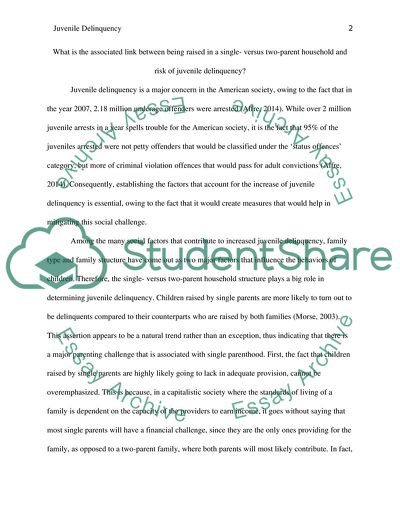Cite this document
(The Link between Being Raised in a Single vs Two-Parent Household and Coursework, n.d.)
The Link between Being Raised in a Single vs Two-Parent Household and Coursework. https://studentshare.org/social-science/1858973-what-is-the-associated-link-between-being-raised-in-a-single-versus-two-parent-household-and-risk-of-juvenile-delinquency
The Link between Being Raised in a Single vs Two-Parent Household and Coursework. https://studentshare.org/social-science/1858973-what-is-the-associated-link-between-being-raised-in-a-single-versus-two-parent-household-and-risk-of-juvenile-delinquency
(The Link Between Being Raised in a Single Vs Two-Parent Household and Coursework)
The Link Between Being Raised in a Single Vs Two-Parent Household and Coursework. https://studentshare.org/social-science/1858973-what-is-the-associated-link-between-being-raised-in-a-single-versus-two-parent-household-and-risk-of-juvenile-delinquency.
The Link Between Being Raised in a Single Vs Two-Parent Household and Coursework. https://studentshare.org/social-science/1858973-what-is-the-associated-link-between-being-raised-in-a-single-versus-two-parent-household-and-risk-of-juvenile-delinquency.
“The Link Between Being Raised in a Single Vs Two-Parent Household and Coursework”. https://studentshare.org/social-science/1858973-what-is-the-associated-link-between-being-raised-in-a-single-versus-two-parent-household-and-risk-of-juvenile-delinquency.


